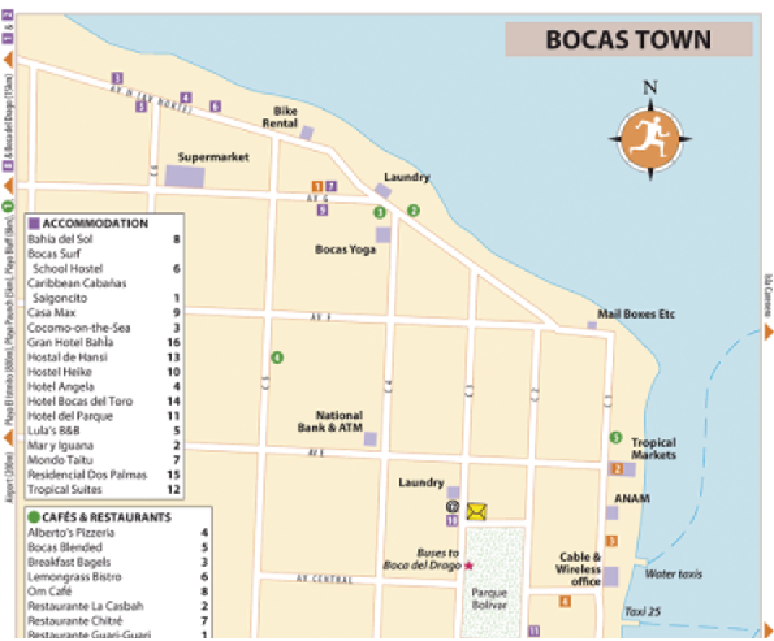Travel Reference
In-Depth Information
Bocas Town
Arriving in
BOCAS TOWN
, a spread of rickety wooden buildings painted in faded pastels
and a laidback, mostly English-speaking, population welcome you to the island's casual mel-
ee. The town went into decline after
the banana trade
collapsed, until a steady trickle of back-
packers and American retirees in the 1990s, followed by a country-wide real estate boom,
catapulted the town into another era. Around twenty years ago, there were only three hotels
in Bocas; now there are more than seventy. Yet while Bocas Town is a fine spot for hedonistic
young travellers, there are plenty of options for anyone seeking a more mellow sojourn.
The main festival is the
Feria del Mar
, held on Playa del Istmito in late September, whose
endless rows of exhibition stands, craft stalls, mountainous fry-ups and late-night partying on
the sands draw visitors in their thousands. There's no sightseeing to be done in town; exper-
iencing Bocas is more about hanging out in the waterfront bars and restaurants, soaking up
the laidback vibe, getting out on the water during the day and partying at night.
The town centre
Bocas is laid out on a simple grid system with most activity centred on
Calle 3
, the broad
main street that runs north-south, spilling into Calle 1, which bulges out into the bay, where
the decks of attractive wooden hotels, bars and restaurants stretch over the water on stilts.
Halfway up the main drag, lined with supermarkets, souvenir shops and stalls, hotels and hos-
tels, sits
Parque Bolívar
, the social heart of the town, shaded by coconut palms and fig trees,
with a bust of the Liberator the town's sole monument.

